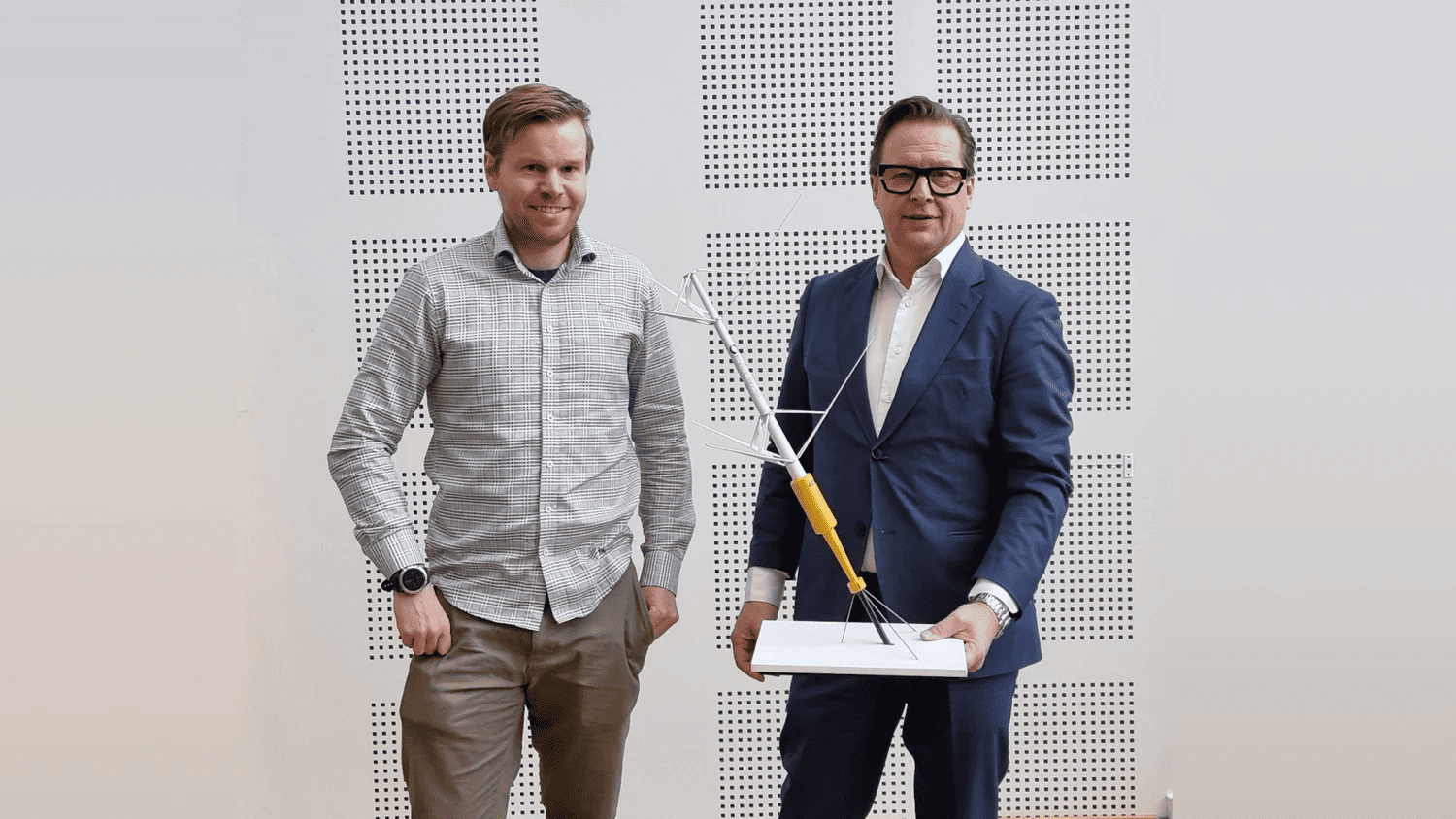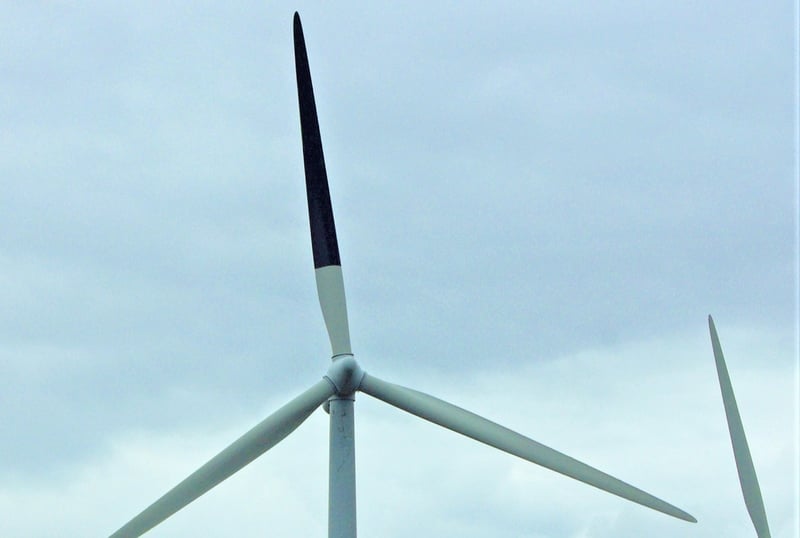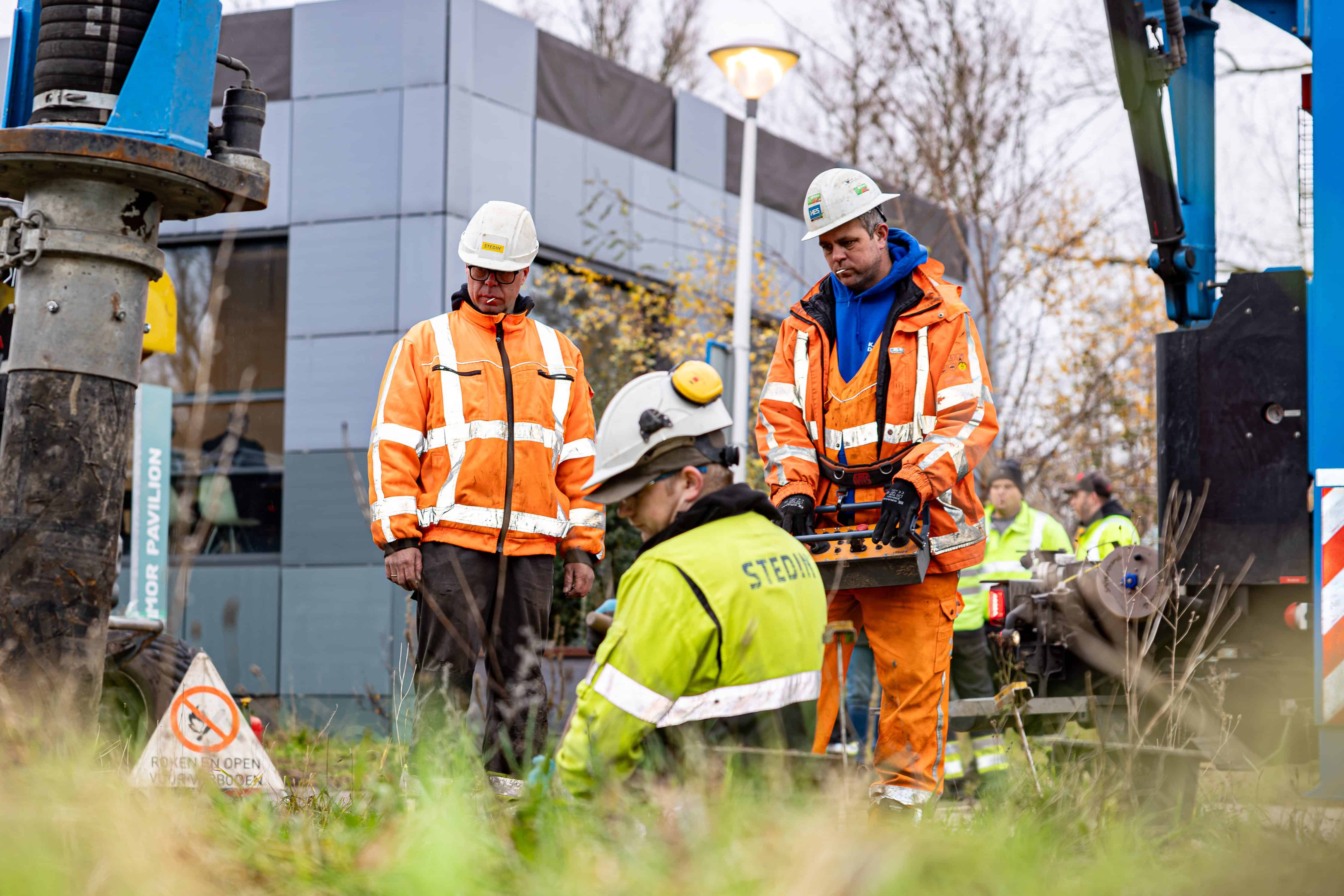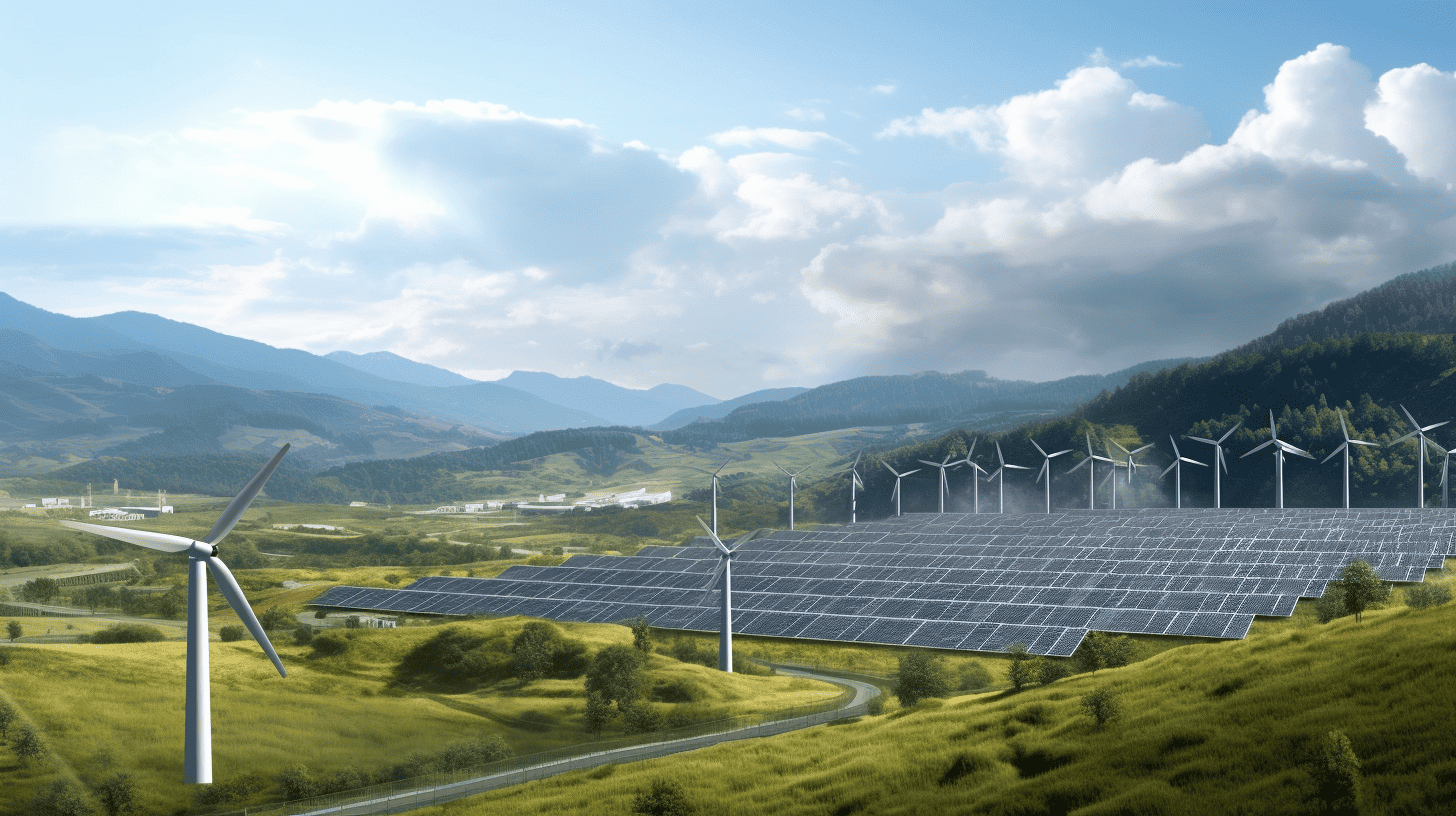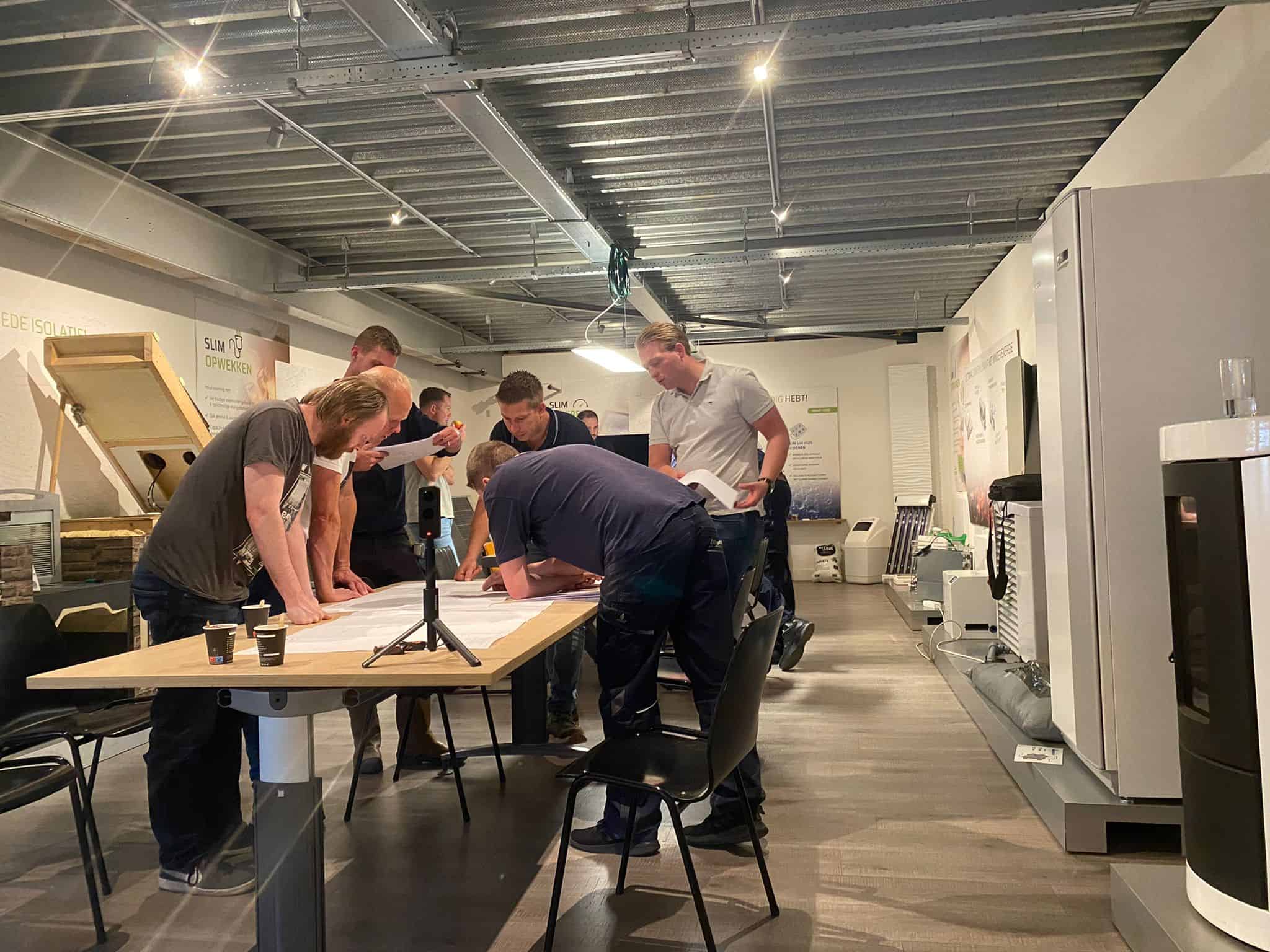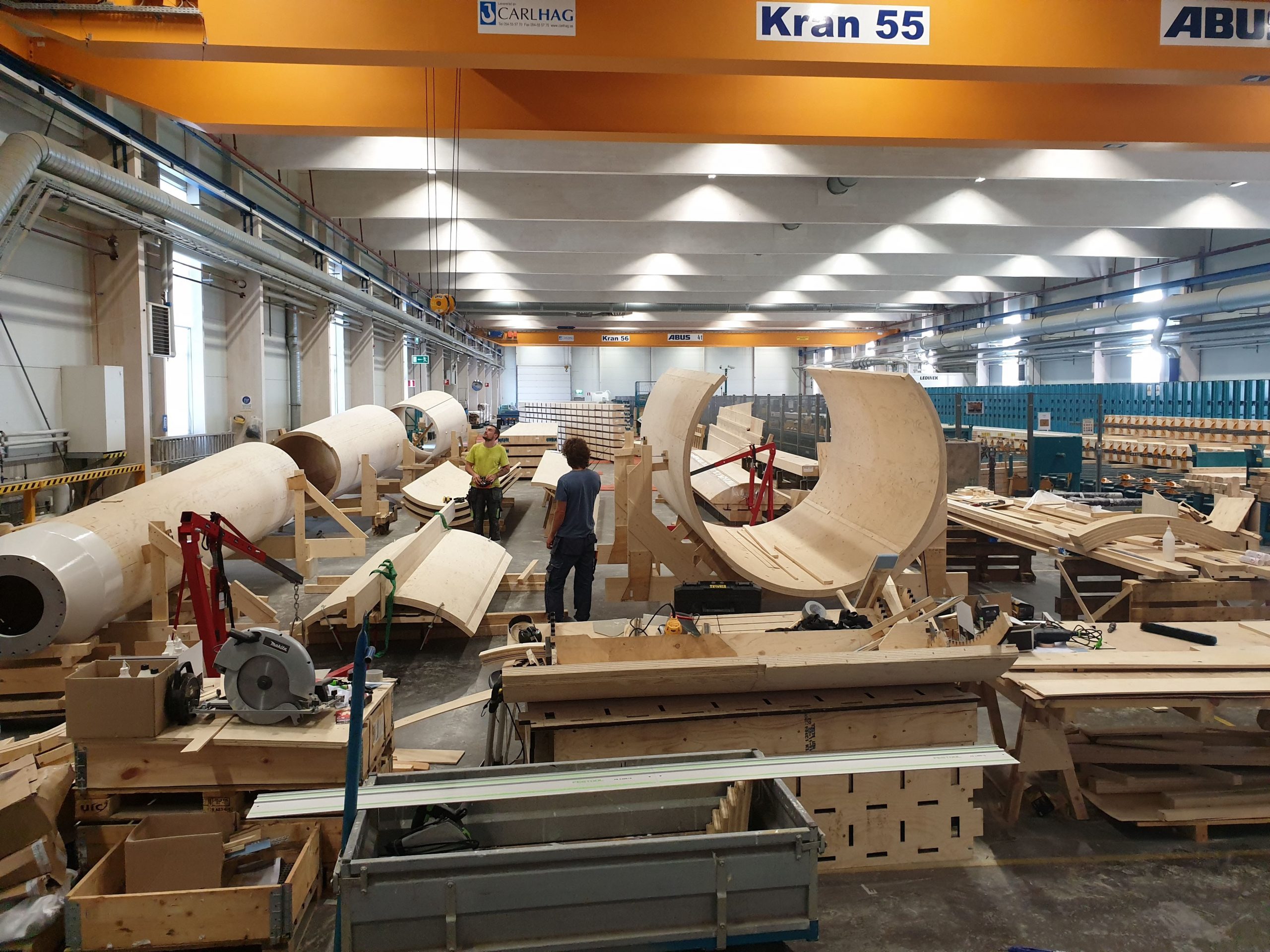
It was just under a year ago – on 29 April 2020 – that the Swedish engineering company Modvion put its first timber-framed wind turbine into operation. The 30-metre tall turbine was the first of its kind back then. At the time, it was seen as an interesting experiment but one with not too many prospects for the future.
However, since Vestas stepped in as an investor at the end of last week, things have been looking up. Vestas is the world’s largest wind turbine manufacturer. So, when they say that wooden wind turbines can make an important contribution to the energy transition and reduce their own carbon footprint, then that is really making a statement.

Stronger than steel
Modvion states that these windmills have a number of advantages over a turbine with a steel platform. First of all, chair of the board Otto Lundman claims that their wooden turbine columns are “stronger than steel.”
Which means that they can be used for very tall structures. They are cheaper in terms of material costs and easier to transport due to their modular construction in smaller components as is the case with steel turbine towers.
Modvion’s wind turbines are not made from felled trees but from a type of biomaterial, laminated veneer lumber (LVL). This is sustainably sourced and does not negatively impact forest resources.
80% less CO2 emissions
Which is what makes it so interesting for Vestas. In their view, CO2 emissions can be reduced by 80% throughout the entire production chain of a wind turbine. This is because energy-intensive steel would no longer be needed.

“In order to overcome the climate crisis, we need more sustainable energy and more sustainable construction materials. The technology from Modvion offers both,” Lundman adds.
Trial
The wind turbine that was installed in April last year was mainly intended as a trial. But according to Lundman, large-scale production of wind turbines with a wooden base could start as early as 2022. These could then also be much taller towers. A letter of intent has already been signed with Rabbalshede Kraft for ten turbines of at least 150 metres in height. Lundman contends that a much greater height is not a problem because of the modular construction of the turbines.
Modvion is the very first investment by the investment company Vestas Ventures, which was founded at the end of last year. The aim of this Vestas branch is to discover young companies at an early stage that are interesting for the energy transition. Vestas says that it is now going to gradually incorporate Modvion’s LVL technology into its own wind turbine design and production process.



